Why use a nuclear deterrent?
This article is the opinion of the author, the UK Defence Journal has no stance on Trident.
After all you will spend billions of pounds on a weapon system that you spend each day hoping to never use and is dubious if you would use it, if it came down to the wire.
But simply put a nuclear deterrent puts certainty into the equation, chance is removed from war and that makes it more effective than the largest conventional arsenal.
But how does it remove chance?
Well this comes from the premise of Mutually Assured Destruction (MAD), as the destruction with these weapons would be absolute and certain
As if the target of either a conventional or nuclear strike was armed with nuclear weapons themselves, their retaliation would bring unrivalled destruction onto the aggressor.
So would you risk attacking them, knowing that the retaliation that would be brought would be inescapable and total.
Would Japan have attacked Pearl Harbour had they have known that the US would invent and then use atomic weapons?
Probably not as with conventional wars the outcome was not known, yes it is a gamble if you would succeed but it was risk vs reward.
But they don’t just eliminate chance in a war but also from a single attack; as if we look at the infamous bomber raids of WW2 a lot could go wrong.
Bombers could be intercepted by fighter, they could suffer mechanical issues and turn back, the weather could divert them and this could decrease the ordinance on target. But would need more ordinance than a bomber wing could carry to destroy an entire city.
This is an outcome which would be highly unlikely with nuclear weapons, as you’ve gone from needing dozens of bombers to get through to just one or two warheads.
And when you are the United States or Russia with approximately 7,000 warheads each, that is a lot of cities that can be targeted and could be destroyed with 100% certainty.
Yet in the nuclear age that is gone, there is a fixed outcome and that is a loss for all.
An outcome that is forever fixed, as the form of nuclear weapons changed from fixed launch silos and moved out to sea; so even the most determined and overwhelming pre-emptive attack could not stop a relation.
And so we have the ultimate stalemate weapon, or do we?
As it is a weapons system that is ineffective against terrorist groups, a modern and evolving threat that we are facing each day.
Owing to the pure power for nuclear weapons it is a system that could never be used against an individual or a cell because of the extreme collateral damage it would cause.
That is even before you start to think about the international and diplomatic incidents caused by detonating a nuclear weapon in someone’s country.
If a rogue nation emerged, a threat from a regime that isn’t accountable and openly flaunts the UN and wider world?
Could we use it against them as a pre-emptive strike of our own before they were able to arm themselves with nuclear weapons of their own?
Could we escalate a conflict by using these weapons on someone who is defenceless against them or use it as a first strike?
According to the United States, no.
During the Korean War the idea was brought up of blanketing the north of Korea with nukes so as to create an impassable radiation field so China could not send reinforcements down.
This was an idea that was never followed through with and remained a plan of history.
Though the denial of that plan can be seen to have been a turning point for nuclear doctrine as it set the stage for not using these weapons in a conventional war.
They would just be weapons of last resort, to be used if fired upon first; this idea and doctrine can be seen to be the reason as to why the Cold War remained cold.
So it is fairly obvious that these weapons will not be used unless as a last resort but should they even be used then?
Surely it is immoral to have such a weapon, let alone use it?
But a weapon in of itself is not moral or immoral, only the intention of the persons behind it are subject to morality.
However, in this case the question is if it is more moral to threaten to use such a weapon and prevent a conflict in which millions could die? Or is it more moral to renounce such as weapon system and let millions meet their fates?
As Harold Macmillan once wrote in a letter on this subject: “I think it is indubitable that their possession does tend to preserve peace and to prevent holocaust which it is the duty of Governments to avoid”.
“A duty of Governments to avoid” which is why we have a Ministry of Defence and we come to the one of the simple reasons for trident. For the price of the system the level of protection offered is unrivalled, as the amount of conventional forces needed for the same destructive power would be economically unviable.


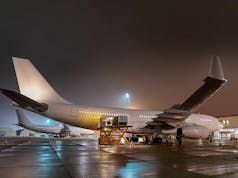

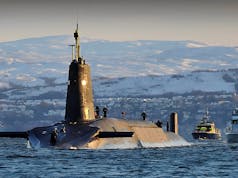
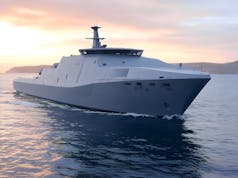
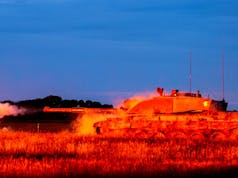

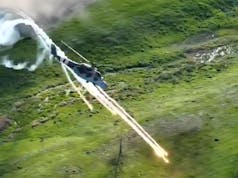


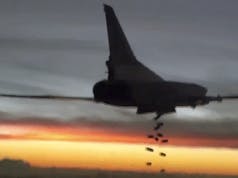

Its necessity is understandable to anyone that lives in the real world. I don’t even bother debating the issue with snow flakes that can only think inside there safe space Utopian box. Its real problem is the £30,000,000,000 price tag and what governments have to forgo to enable that kind of capability. We could nearly double the size our armed forces for that price tag.
Most European countries are happy to free ride off the USA’s nuclear deterrent and still not reinvest the money in other branches of their armed forces. What happens if the USA takes its eye off Europe all together its not as strategically important as it once was. Without American support Europe would run out of munitions within two weeks of any serious armed conflict.
Yet we tell Iran that they can’t have a nuclear defence even though they are far more likely to be attacked than we are #DoubleStandards
We must restrict the availability of nuclear weapons especially to regimes like Iran.
We cannot uninvent these weapons, but hope that they are never used again. Best way is to limit proliferation.
I know I completely agree, at least they seem a bit more sensible than the N Korean’s. I don’t really understand western policy in the middle east other than to secure the safe supply of oil which is understandable but to claim one is part of an axis of evil and not the rest is outrageous. The problem is if Iran develops them so will the Saudi’s lets hope they never put them in the hands of some of these extremists as worst case scenario is one is smuggled into Europe and detonated which I would not put passed some of these fanatics.
Two questions in my mind.
1. Do we need nuclear weapons as a deterrent?
2. If yes does it have to be trident?
I acknowledge the fact that continuous at sea deterrent is probably the most effective system available, but you have to balance that with the cost.
Do we have to have trident no matter what the cost?
There is no price we are not prepared to pay even if it means we have deplete our conventional forces and other spending to pay for it?
I am undecided on all those questions, except the first we must retain nuclear weapons.
I know tomahawks can be nuclear capable, but I guess they are much easier to shoot down. They would certainly be a much cheaper option just need to make sure they are made idiot proof so we don’t use one by accident.
If the current system is still impossible to counter why the need for all of the R&D can we not just build 4 new modernized Vanguard subs with new missiles and let them sail for another 30 years. The last subs didn’t cost anywhere near £30bn.
My lay-person’s answers would be…
1 – We don’t know, or put another way we definitely don’t need it – until we do. For me that’s the key thing about the deterrent, it is more of an insurance policy than a weapons system, potentially insuring against some event 50 years in the future which we couldn’t possibly predict now. It’s a very expensive insurance policy but I’m afraid that I think it’s wisest to pay the price to have it.
2 – That’s an interesting one. We are told that all other delivery systems are too vulnerable and likely to be destroyed before being able to launch or their payloads intercepted (e.g. cruise missiles). I can believe that so I would say yes, it does need to be submarine based.
One thing I wondered though (and it’s far too late now) is, with the common missile compartment (CMC) being able to host either Trident or cruise missiles (at least 6 cruise missiles for every Trident and probably more like 8), would it have been practical to skip the Successor/Dreadnought class and go straight to Astute successor that included a single 4-pack CMC rather than the 3 x 4 in Dreadnought?
The CMC is deep/long I think so the subs would still have been pretty big so not sure how much that would have reduced the cost per sub but presumably it would have got us at least some more subs for our money and have avoided any design costs for Astute replacement which could also have gone to extra boats, and it would have delivered a next-gen SSN that had VLS capability for cruise missiles.
The idea would be that the first 4 off the production line would initially be dedicated to SSBN tasks but as boats 5/6/7/etc come into service the boats could be swing-role on a mission by mission basis, either SSN or SSBN (or training or refit of course). Having a single fleet would presumably reduce the percentage lost to training tasks and gives the flexibility, at a time of nuclear tension, to allocate more to SSBN to increase the number on patrol. It would also give fleet commonality and personnel interoperability (except for weapons and a few comms specialists I imagine) thus reducing costs and increasing overall hull numbers.
Hey Mike. I think those are indeed the correct two questions and I would have to say yes on both counts. The cost is only a problem in relation to the defence budget, in terms of GDP it is minimal. Either increase the defence budget or move Trident and associated costs back to a separate budget like in the past. If we want to retain of position on the security council we need the deterrent and if we need the deterrent we need to be sure it works, therefore we need the current system as it the most survivable, deliverable, robust and potent available.
I think the “Successor” class of Trident Submarines will be the last. It’s already possible to shoot the odd ICBM down in a pinch. Fifty years from now, it may be possible to defeat a saturation attack. These missiles may be on the verge of obsolescence. So what then?
I agree and it’s an interesting future to contemplate. In terms of dodging the defences then something in orbit, either directed energy or something with absolutely massive velocity would do it but the problem there is that having the launch platform in orbit is probably the only realistic launch point for such weapons and that’s the equivalent to a sniper standing in the middle of an open field with a big target on his/her back saying “shoot me” so such platforms couldn’t be assumed to be able to survive long enough to launch their weapons.
Just maybe, and dare we dream this, it might be a time when weapons of mass destruction do disappear, not by any act of multilateral disarmament but due to technological obsolescence.
For a while though good defence technology would probably create another harsh inequality in the world with ICBMs still out there but only a few of the wealthiest countries able to afford the undoubtedly massively expensive defence shields to make them immune to a counter attack.
Actually, in the above case it probably wouldn’t only be technological obsolescence driving disarmament but also economic constraints. For a while a country might have a > £100 billion SSBN program coming up for renewal and a probably also > £100 billion defence shield. When the point comes to replace the SSBN fleet I suspect most countries in that position would say that they can’t afford both and would not do SSBN renewal so that the SSBN money can be deployed elsewhere with maybe some going to conventional military but also to other national priorities at the time. If this point comes then, in my view, the world will definitely be a better place.
amen to that!
Personally I like the idea of exploring tomahawk nukes on stretched Astutes. If they carry 20 odd missiles then surely any country would be taking an almighty big gamble if it thought it could shoot them all down. Still provides a deterrent but at a reduced cost. That should allow us to develop/buy our own missile defences and a bigger conventional military. One could hope anyway.
The problem with that is no one knows if any given missile is nuclear or not. This would introduce an unstable element to an enemies already critical situation. It is also far to vulnerable as a deterrent system. Tomahawk is also sub sonic and would carry a tiny warhead, lacking credibility as a response.
In regard to missile defence the path is clear and obvious. Install the 16 MK41 VLS on Type 45s and buy Aster 30NT.
I agree with the reservations about nukes on Tomahawk but stretched Astute doesn’t mandate that. Each tube in the common missile compartment can take either a single Trident or a whole load more than a quad-pack (to compare with quad-packing Sea Ceptor into a Mk41 tube) of Tomahawk. I haven’t been able to find any actual specs but from dimensions I would be surprised if it wasn’t at least 8 TLAM in a single CMC tube and maybe as many as 10. The USN already have “six shooter” packing of TLAM into old SSBN tubes.
As for confusion, keeping all nukes on Trident, never a nuke on TLAMs, avoids that. In addition, having a policy that when a sub sails it is either sailing as an SSBN for that mission or as an SSN but never a mixed mission, avoids confusion too by making it a publicised operating procedure that a sub on an SSBN tasking will always behave as SSBNs always do, i.e. never surface, never try to call into a foreign port, etc. That means that if anyone even sees a “stretched Astute” on the surface or in a port then it is either in distress (with the usual procedures associated with an SSBN in distress) or it is an SSN.
We need trident and only a loon would have land based nukes .. Easy target land based ..
No matter what the cost?
Minuteman, SS-21…?
Hey Julian. You are right in that a stretched Astute would avoid many of the issues but I still see a few problems, even following your suggestions. If we agree we need to keep Trident then changing from dedicated SSBNs to stretched Astutes can only be to save money. If that’s the case how many stretched Astutes would we get? No more than four I would bet. This leaves us with less firepower available as the stretched Astutes won’t get 12-16 tubes but more likely 4-8 (each tube can fit seven TLAM) but only one D5. This means we would have less missiles and warheads and we already are at bare minimum levels. Not worth it to save a few pennies. Even if we got eight stretched Astutes instead of four SSBNs we couldn’t crew them and if we did we wouldn’t be saving any money. Also considering Astutes cost about £1.4 billion before you add 4-8 tubes and you Would need to build at least 4, are you really going to save much anyway. I may be missing something but I am just not seeing any benefit.
The key is how much cheaper a stretched Astute would be and I don’t know. My thinking was not to save money but to spend the same. I think the latest estimates were about £16 billion on the 4 subs so probably not unreasonable to hope to get 6 – 8 smaller ones plus at the end of it all the design work done and the production line up and running ready to go straight on to Astute replacement once the first batch funded by the existing DN budget are done. What I’m envisioning would be building something like 6 to 8 stretched Astutes using the existing budget allocated to the DN program plus probably an 8 or 9 for 7 replacement of Astutes using the budget that at some point needs to be allocated for the next 1 for 1 Astute replacement program (getting 8 or 9 instead of 7 due to no design work being needed and a production line already up and running). That would take things from a 4 x SSBN + 7 x SSN fleet to a fleet of between 14 – 17 stretched Astute. Take 4 out for SSBN tasking and you’re still left with somewhere around 11 or 12 available for either SSN of extra SSBN tasking. With the ability to have common training (one SSBN is currently allocated for training in the stand-alone SSBN fleet) percentage availability would also probably be higher than for two separate fleets so I wouldn’t be surprised if of those 11 or 12 something like 6 or 7 could be deployable at any one time compared to something like 2 or 3 Astutes so it yields a massive uplift in deployable SSN numbers within the budget already allocated to DN plus the budget that ultimately will need to be allocated to Astute replacement.
As to the other objections. Well, the biggest one is that DN is already designed and the program already underway so this is all a bit of a pointless what-if fantasy exercise but, apart from that killer objection, the “we couldn’t crew them” is also compelling. Unless the government gives the RN more funding and better conditions there’s not much that can be done about that. As for having only 4 D5 out there compared to 12 for DN as currently planned that’s true, standing operations would be a bare minimum CASD but with so many other boats in the fleet available then, in times of tension, more boats (crew specialists permitting) could be given SSBN taskings. 3 SSBN at sea would give equivalent to DN or in one way better because they’re not all on a single sub so harder for an enemy to neutralise before launch. The capability would also exist to scale up even further. Note that because boats, missiles and warheads exist, and assuming sufficient extra crew are kept current on SSBN specialist skills as required to scale up, this isn’t like the crazy “let’s build SSBN without missiles and add them if we need them” idea that came out of Labour at one point because here the scale-up could happen within days, perhaps even a single day.
The subsidiary reason for Trident is to maintain the UK’s seat at the Security Council of the UN. As such, it is only reasonable to expect a large part of the running expenses for Trident to come from the Foreign office and/or other sources rather than the Navy having to pay for it all. I stand to be corrected, but I believe that this used to be the case however, a certain Mr Osborne changed the arrangement to what we have today.
That’s my understanding too. Having the budget separate from the main military budget was also cleaner in my view because it did recognise that the deterrent isn’t really a weapons system that the military gets any use out of (we hope) but is more of an insurance policy for the entire nation against some totally unforeseen event decades into the future or that might not happen at all. The defence budget should fund the active day-to-day military not a national insurance policy.
I agree completely. I mentioned this in another thread, if the budgetary pressure of successor was removed from the RN and there where no further cuts to the remaining budget we would be having a very different discussion. It was a stupid and short sighted decision to burden the RN with the deterrent cost. That is what has hollowed out the fleet not the carriers.
Julian I can see the benefit of having more boats available but like you say Dreadnaught is already started. However they use the same reactor as Astute so it might not be beyond the realms of possibility to make the change. Manpower however could be the stumbling block. Even if we could not solve that, it may still be better to have a couple of boats tied up in reserve. By the time we hit boat 12 the manpower issue may have improved. There would be a lot of moving parts, some of which you mentioned but it might just be worth it to from 7-11/12 operational SSNs.
[…] 4: Trident Ahead of an article from a non-UK Defence Journal writer – (Trident: Why Have It?) – there is a editorial disclaimer: “This article is the opinion of the author, the […]
Growing up in the 70’s and 80’s I was pretty much right into CND. However now as a fifty year old alky, I couldn’t give a fuck. What would happen if another nation came over and said “give us all your gold or we’ll nuke London and Manchester, you British slags!”? – And for that reason, and for that fucking reason only, is why I think we need it.